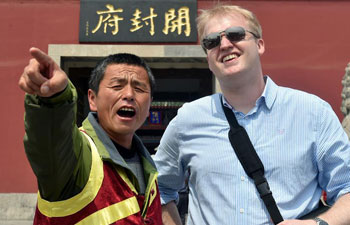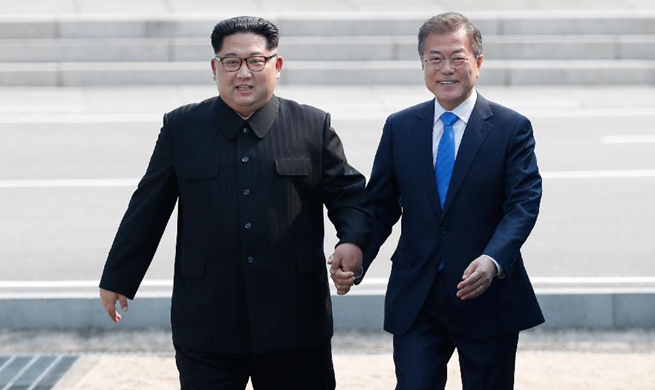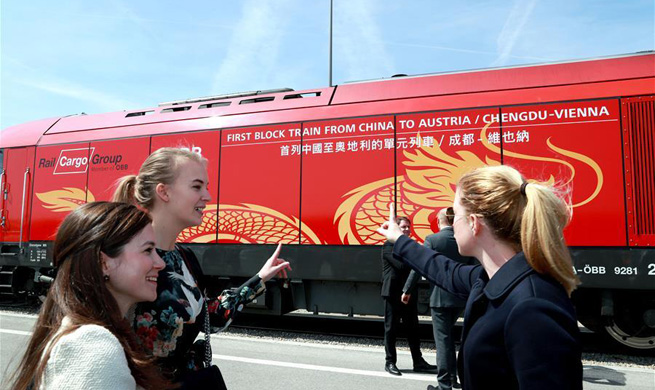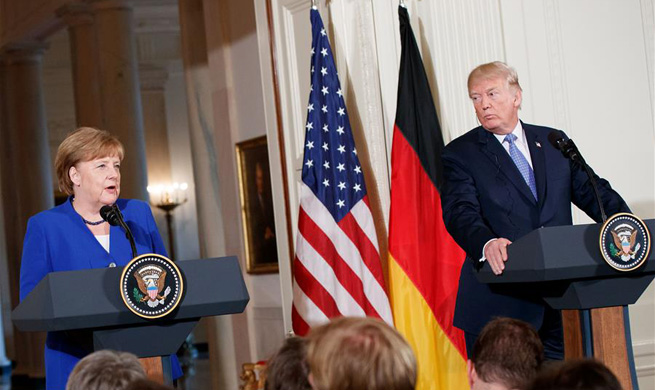by Xinhua writer Liang Junqian
BEIJING, April 27 (Xinhua) -- On Friday, Peace House at the truce village of Panmunjom witnessed a historic ice-breaking summit where the top leaders of the two Koreas endeavored to nurture a bud of peace from the pain of division.
Watched by the world closely with hopes for progress, the two sides confirmed in a joint declaration issued after the meeting a common goal of complete denuclearization and agreed to push for multilateral talks to turn the current armistice agreement into a peace treaty.
These results have demonstrated the two sides' willingness to make new history of lasting peace on the Korean Peninsula.
After all the handshakes and smiles, now is the time for the two Koreas, which are still locked in an uneasy truce 65 years after the end of the Korean War, to take concrete actions to implement the agreement made by South Korean President Moon Jae-in and DPRK top leader Kim Jong Un.
The first step would be to strengthen mutual trust, which is a vital yet difficult mission after all these decades of estrangement. The recent events in the region and beyond have shown that a favorable environment that could help build up the much-needed trust has been in the making.
Days ahead of Friday's meeting, Pyongyang pledged to discontinue all nuclear and missile tests. Earlier, Washington sent then CIA Director and U.S. President Donald Trump's close aide Mike Pompeo to Pyongyang to pave the way for a potential Trump-Kim meeting. Before Pompeo's trip, Kim paid his first visit to Beijing, which was also his maiden trip outside his country since he became the DPRK's top leader.
That momentum should be maintained when the two Koreas and other related parties start to work in the coming months on the denuclearization of the peninsula and the transition from the armistice agreement to a peace treaty.
For decades, China, a major stakeholder in the Korean Peninsula issue, has been working hard to play its pivotal role in contributing to lasting peace and stability in the region. China's "dual-track approach" and the "suspension for suspension" proposals have proved to be an effective way to create the basic conditions for a nuclear-free peninsula.
The dual-track approach is the proposal to seek denuclearization of the peninsula alongside establishing a peace mechanism. The suspension-for-suspension proposal is for the DPRK to suspend its nuclear and missile activities in exchange for the suspension of large-scale U.S.-South Korea military exercises.
Washington could start by suspending its military drills with its allies in the region as a corresponding move to the DPRK's promise to end its nuclear and missile tests.
In the end, all related parties should help set up for the region a mechanism of common security, which would guarantee the security interests of all.
When the truce was signed in Panmunjom in 1953, possibly few then expected the two Koreas would remain technically at war for more than six decades.
Hopefully, Panmunjom, a symbol of the tragedy of national division, can find a place in future history books as an icon of peace, and the Peace House summit lead to "a new start" for permanent peace on the Korean Peninsula.
















